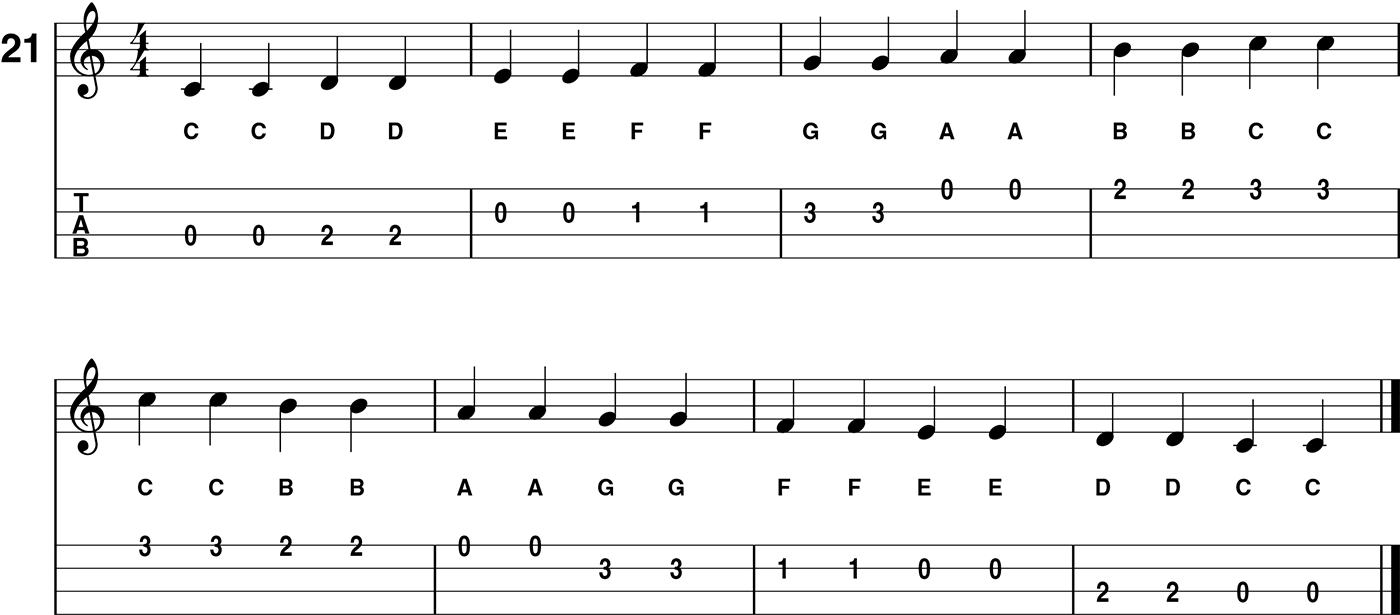NOTES ON THE C STRING
We begin learning notes on the C string, or third string, because in C tuning, the fourth (G) string is usually not fingered except when making chords. However, many players (like Hawaii’s legendary Ohta San) tune the G string low so that it can be used for melody playing.
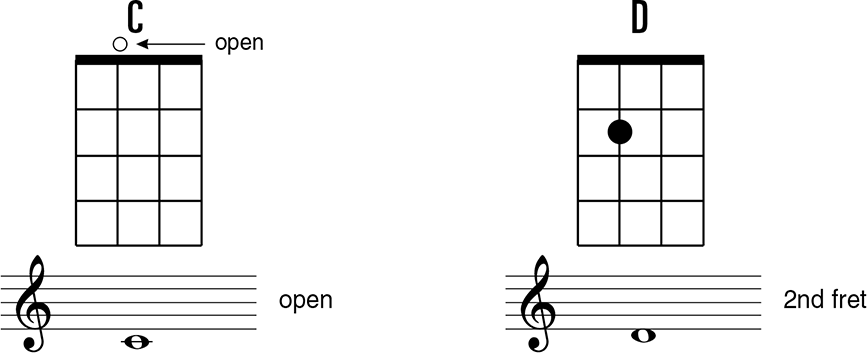
Play these whole notes using your thumb, and count “1–2–3–4.”

Now try playing C and D using half notes. Count “1–2–3–4.”

In tablature (or tab) notation, the horizontal lines represent strings. The numbers indicate which fret to play (0 = open). You’ll always see the tab staff under the main staff.
Keep using your thumb, and count “1–2–3–4” while playing these quarter notes.

Let’s mix it up a little more now!

NOTES ON THE E STRING

Count “1–2–3–4” as you did on the last exercise.
Each time you repeat these exercises, try picking up the speed without sacrificing accuracy.

Now let’s mix it up again.


C AND E STRING REVIEW

FRÉRE JACQUES
(Are You Sleeping?)
Children’s Melody

MARY HAD A LITTLE LAMB
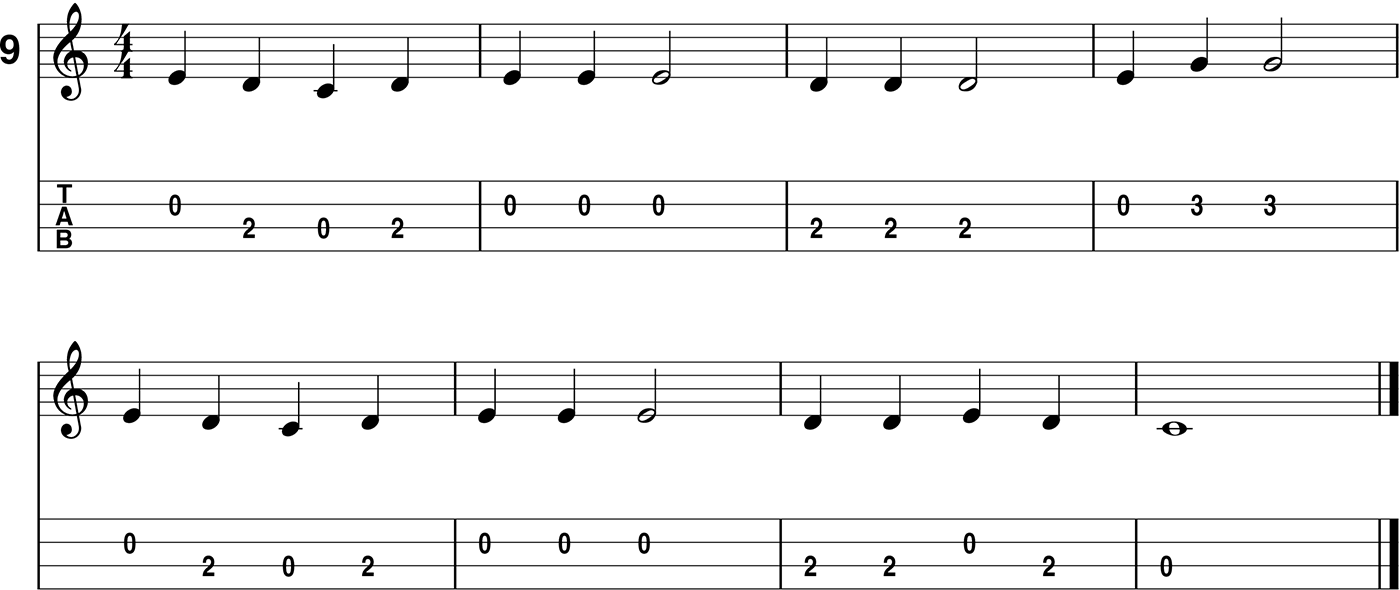
This American folk melody, like “Skip to My Lou,” “Old Dan Tucker,” and so many other “play party” tunes, has become an enduring classic. Just for fun, I have added a schnazzy little ending.
Gray chord symbols are used throughout this book to indicate the chords that back up your melody—they can be played by an instructor or another uke player.
GO TELL AUNT RHODY
American Folk Song
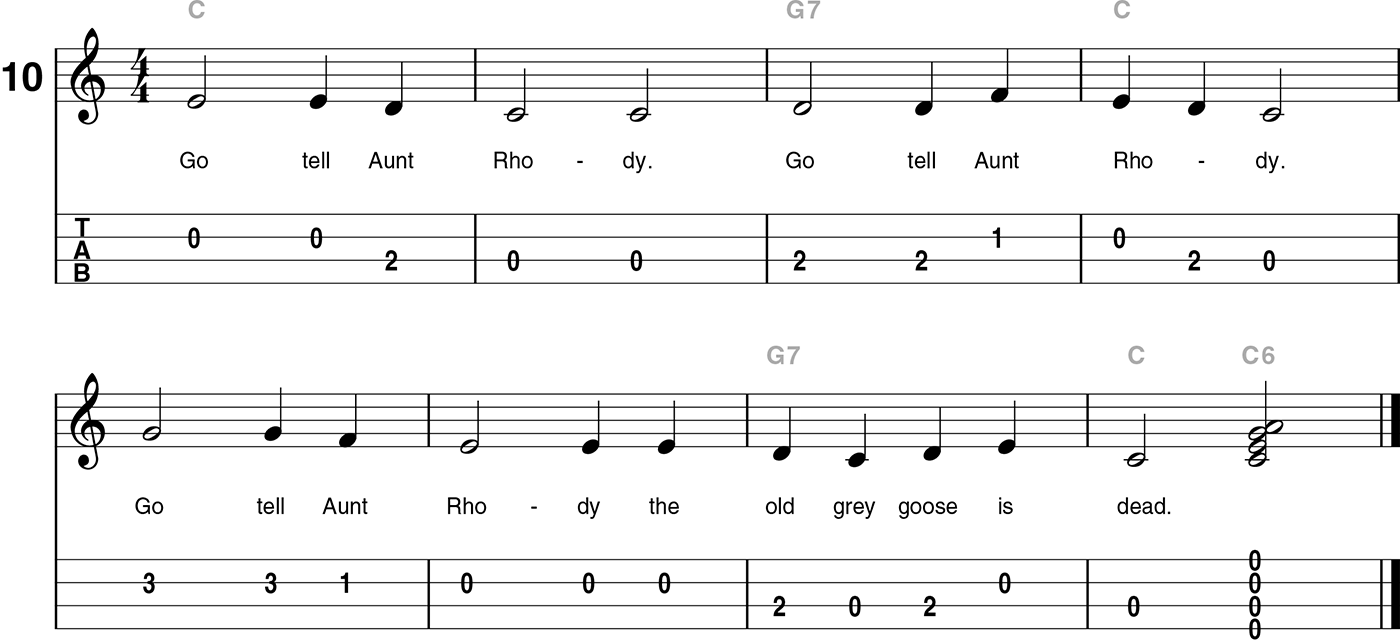
This classical uke arrangement will help you get familiar with many of the notes you’ve just learned while switching back and forth between the C and E strings.
ODE TO JOY
Beethoven
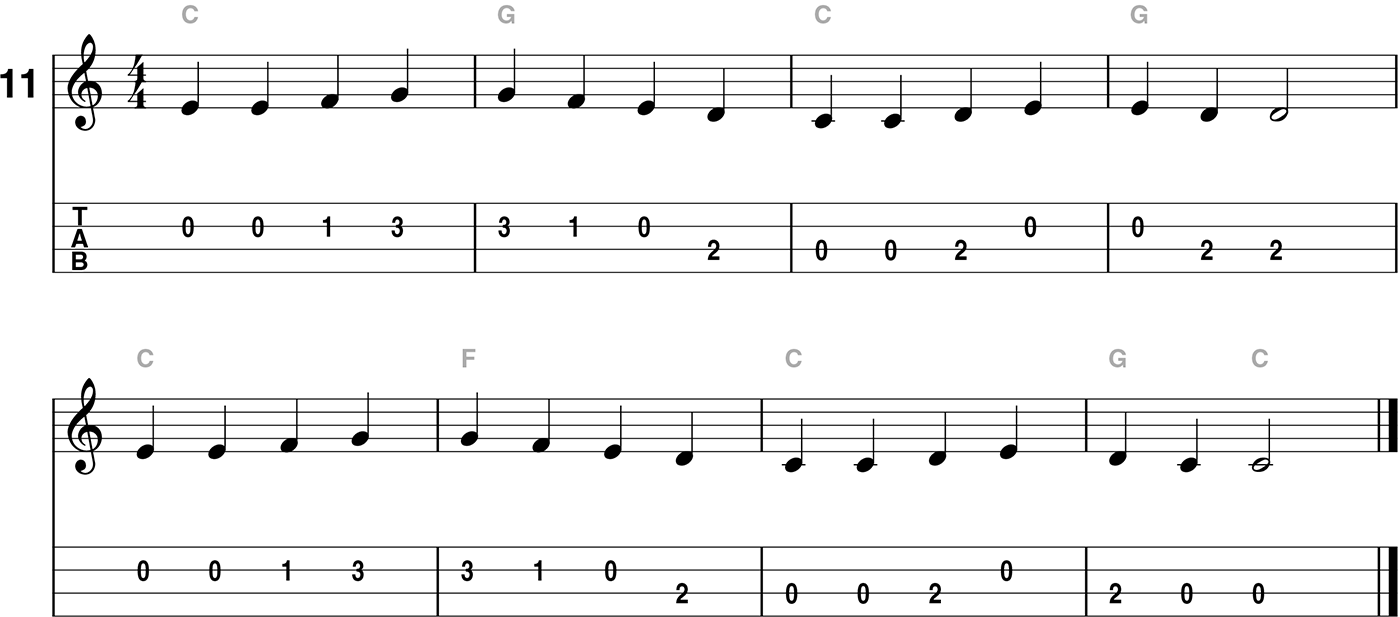
NOTES ON THE A STRING

Count “1–2–3–4” as you did on the previous exercises.

Try saying each note aloud as you play it.

Now let’s mix it up again.

Now let’s play a basic melody everyone knows using the notes we’ve learned on the C, E, and A strings. Observe the quarter notes and half notes, and play with your thumb.
TWINKLE, TWINKLE LITTLE STAR
Children’s Melody
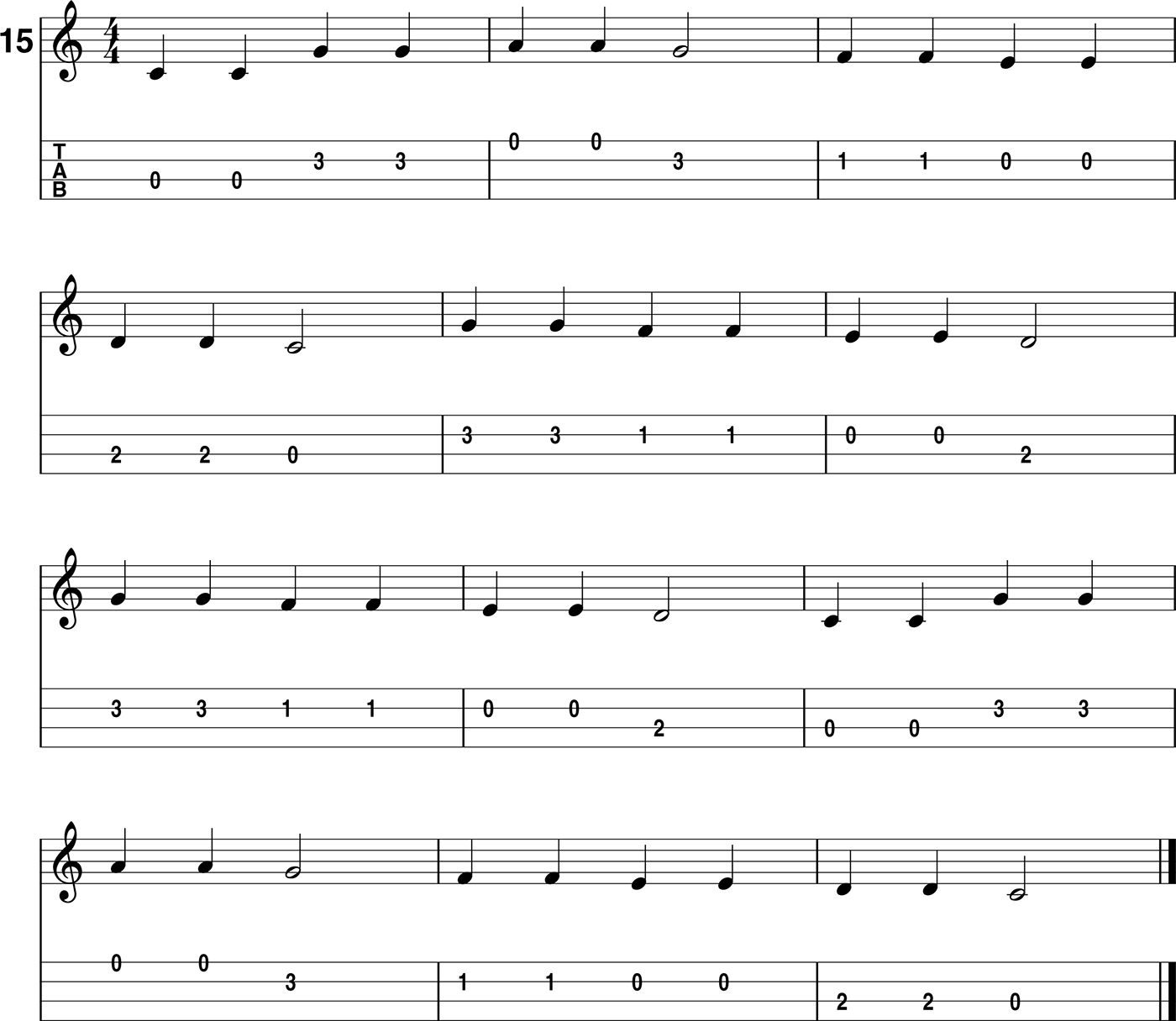
Great melodies never stray too far from our hearts. Often they inspire parodies, like the classic “Twinkle, Twinkle Little Star,” which we also know as “Bah Bah Black Sheep” and “The Alphabet Song.”
Little known and often neglected is the great body of work recorded in the 1920s and thirties by old-time country, blues, and jug bands. Their use of the ukulele demonstrates not only its percussive role, but also the full gamut of uke styling—from intricate strums, rolls, and fingerpicking to tremolo and single-string lead work—all, of course, complimented by scat singing, whistling, yodeling, and other vocal embellishments of the period. Some of these important bands were the Hillbillies, Fiddlin’ Powers Family, Jimmie Rodgers, Memphis Jug Band, and DaCosta Woltz’s Southern Broadcasters.
PICKUP NOTES
Sometimes a melody will begin before the first beat of the first measure. These notes are called pickup notes and they appear in a partial measure called the pickup measure. Always remember to count the missing beats before playing your first pickup note. When a song begins with pickup notes, the last measure will be short the exact number of beats used as pickups.
The pickup measure in this exercise has only one quarter note. Count “1–2–3–” silently before playing the quarter note on beat 4. Notice that the last measure is short by one beat to balance out the one-beat pickup note.

The following pickup measure has two quarter notes. Count “1–2–” silently before playing beats 3 and 4.

DOTTED NOTES
When you see a dotted note, hold that note 50% longer than you would normally hold it. For example, a dotted half note (B) lasts as long as a half note plus a quarter note. A dot adds half the value of the note.
Watch for the dotted half notes on this one.

OH! SUSANNA
Stephen C. Foster
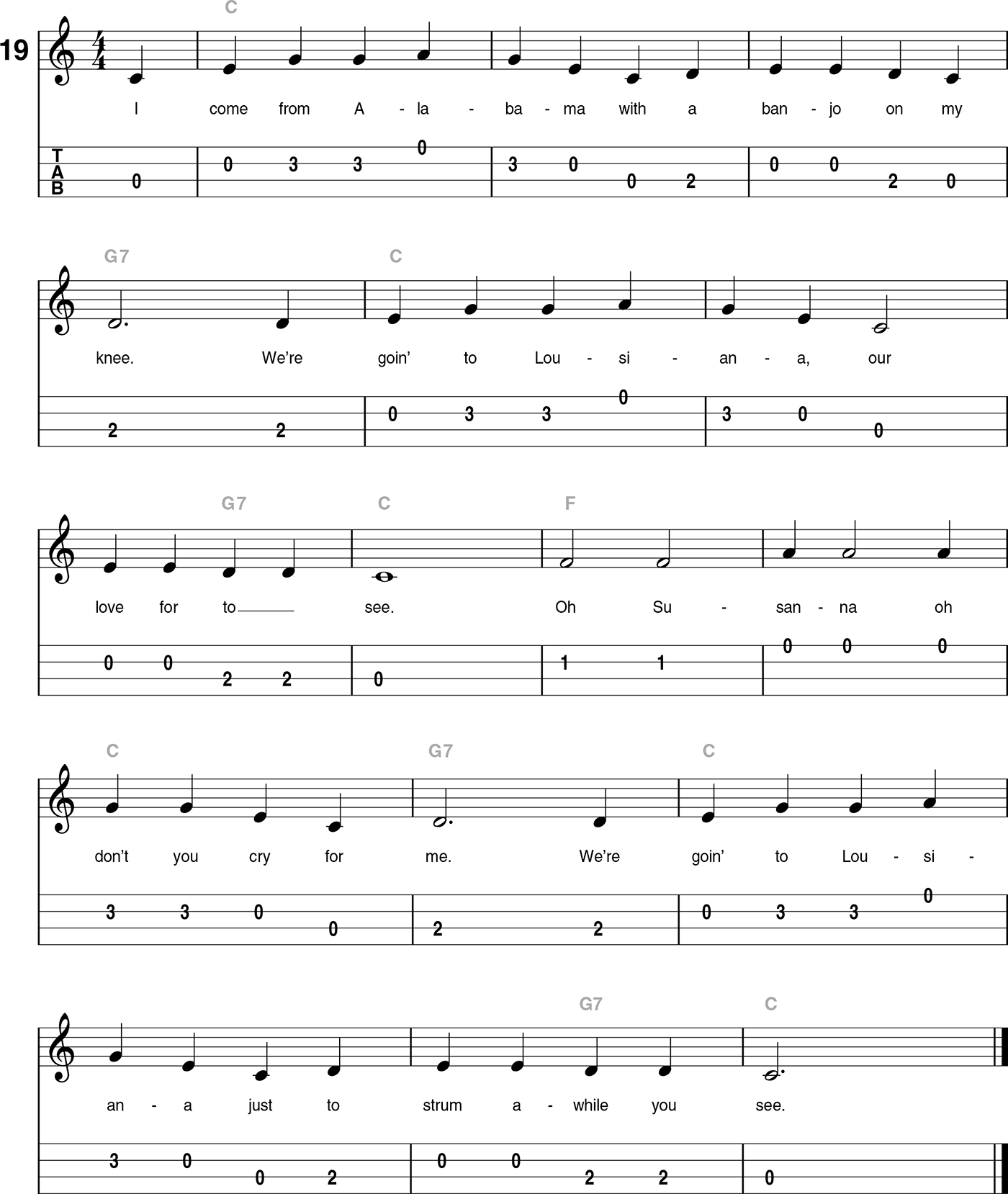
THE C MAJOR SCALE
PUTTIN’ IT ALL TOGETHER
Begin by playing the scale in both directions, up and down. Use your thumb (or a felt-tip pick) and go slowly, gradually building up speed. While you are playing the scale, say the notes aloud as you pick them. When you can do this smoothly without breaking your rhythm, then you’re ready to begin playing some more basic melodies.

Try playing up and down the C scale, picking twice per note. Your goal is to sound smooth and even.
